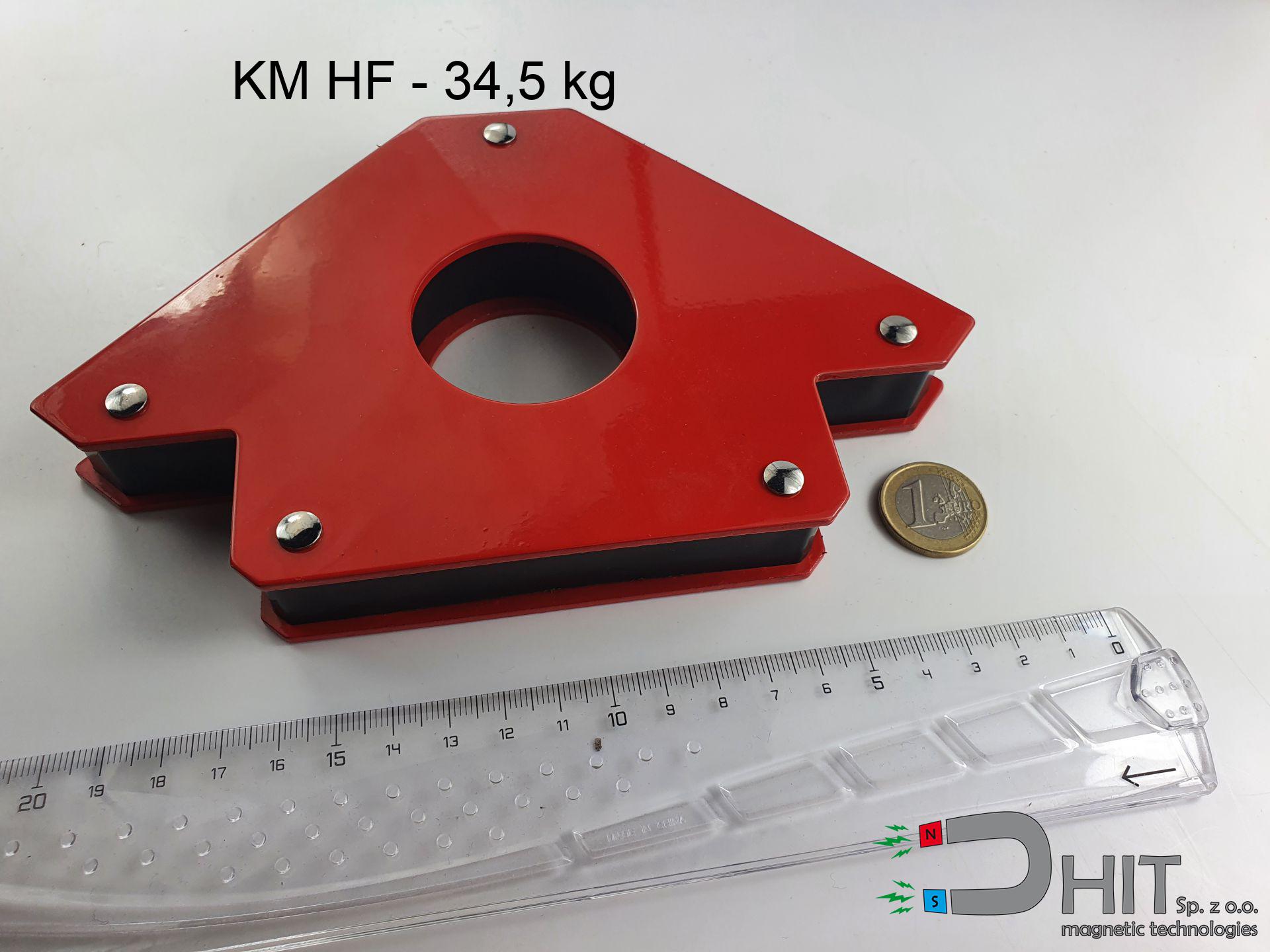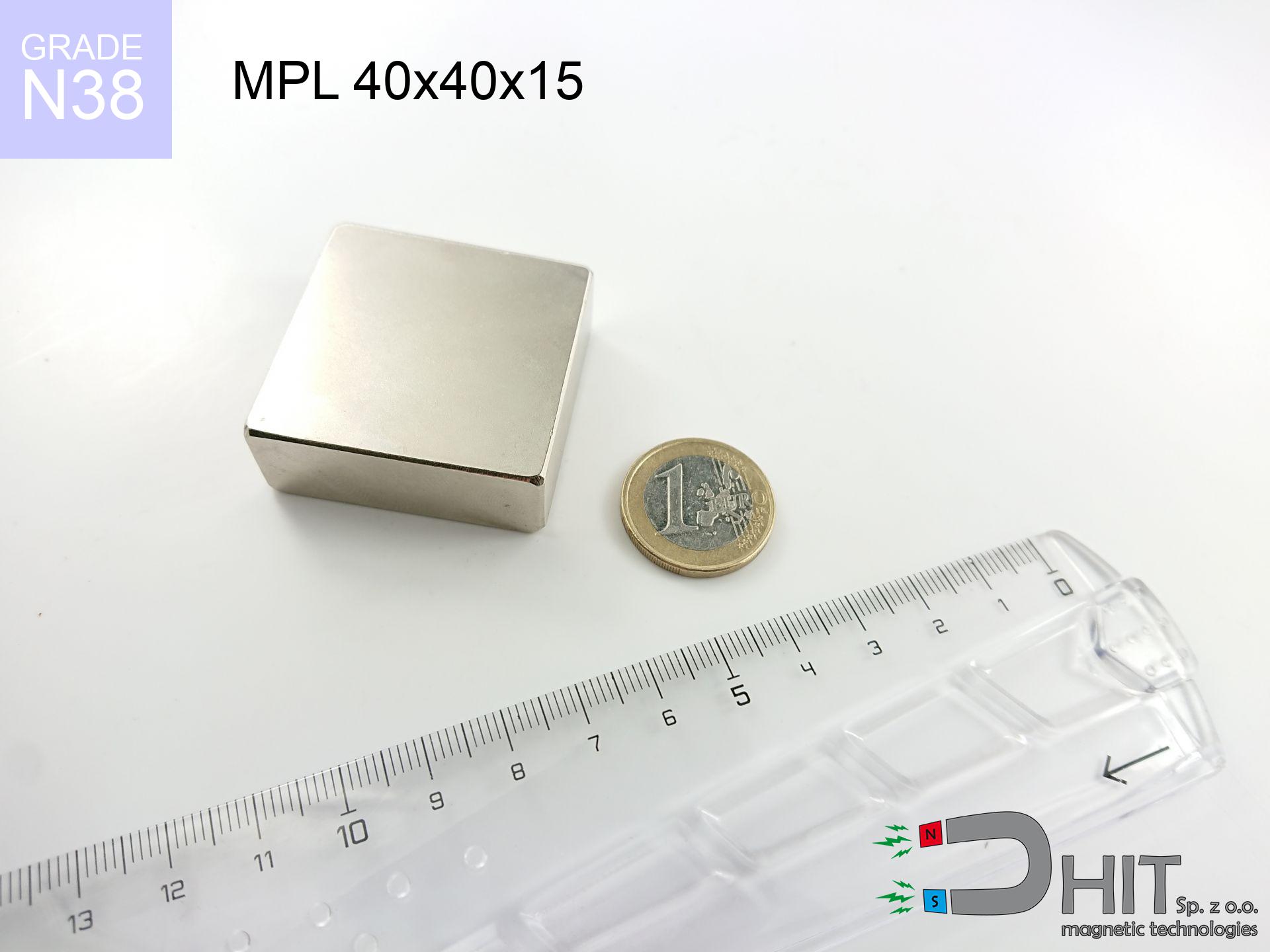SM 25x400 [2xM8] / N52 - magnetic separator
magnetic separator
Catalog no 130470
GTIN/EAN: 5906301813132
Diameter Ø
25 mm [±1 mm]
Height
400 mm [±1 mm]
Weight
1560 g
Magnetic Flux
~ 9 500 Gauss [±5%]
1205.40 ZŁ with VAT / pcs + price for transport
980.00 ZŁ net + 23% VAT / pcs
bulk discounts:
Need more?
Call us now
+48 22 499 98 98
otherwise send us a note using
form
our website.
Weight along with form of a neodymium magnet can be verified using our
online calculation tool.
Same-day processing for orders placed before 14:00.
Technical details - SM 25x400 [2xM8] / N52 - magnetic separator
Specification / characteristics - SM 25x400 [2xM8] / N52 - magnetic separator
| properties | values |
|---|---|
| Cat. no. | 130470 |
| GTIN/EAN | 5906301813132 |
| Production/Distribution | Dhit sp. z o.o. |
| Country of origin | Poland / China / Germany |
| Customs code | 85059029 |
| Diameter Ø | 25 mm [±1 mm] |
| Height | 400 mm [±1 mm] |
| Weight | 1560 g |
| Material Type | Stainless steel AISI 304 / A2 |
| Magnetic Flux | ~ 9 500 Gauss [±5%] |
| Size/Mount Quantity | 2xM8 |
| Polarity | circumferential - 15 poles |
| Casing Tube Thickness | 1 mm |
| Manufacturing Tolerance | ±1 mm |
Magnetic properties of material N52
| properties | values | units |
|---|---|---|
| remenance Br [min. - max.] ? | 14.2-14.7 | kGs |
| remenance Br [min. - max.] ? | 1420-1470 | mT |
| coercivity bHc ? | 10.8-12.5 | kOe |
| coercivity bHc ? | 860-995 | kA/m |
| actual internal force iHc | ≥ 12 | kOe |
| actual internal force iHc | ≥ 955 | kA/m |
| energy density [min. - max.] ? | 48-53 | BH max MGOe |
| energy density [min. - max.] ? | 380-422 | BH max KJ/m |
| max. temperature ? | ≤ 80 | °C |
Physical properties of sintered neodymium magnets Nd2Fe14B at 20°C
| properties | values | units |
|---|---|---|
| Vickers hardness | ≥550 | Hv |
| Density | ≥7.4 | g/cm3 |
| Curie Temperature TC | 312 - 380 | °C |
| Curie Temperature TF | 593 - 716 | °F |
| Specific resistance | 150 | μΩ⋅cm |
| Bending strength | 250 | MPa |
| Compressive strength | 1000~1100 | MPa |
| Thermal expansion parallel (∥) to orientation (M) | (3-4) x 10-6 | °C-1 |
| Thermal expansion perpendicular (⊥) to orientation (M) | -(1-3) x 10-6 | °C-1 |
| Young's modulus | 1.7 x 104 | kg/mm² |
Table 1: Rod construction
SM 25x400 [2xM8] / N52
| Parameter | Value | Description / Unit |
|---|---|---|
| Diameter (Ø) | 25 | mm |
| Total length | 400 | mm (L) |
| Active length | 364 | mm |
| Section count | 15 | modules |
| Dead zone | 36 | mm (2x 18mm starter) |
| Weight (est.) | ~1492 | g |
| Active area | 286 | cm² (Area) |
| Housing material | AISI 304 | 1.4301 (Inox) |
| Surface finish | Ra < 0.8 µm | Polished |
| Temp. class | 80°C | Standard (N) |
| Force loss (at max °C) | -12.8% | Reversible loss (physics) |
| Force (calculated) | 22.6 | kg (theor.) |
| Induction (surface) | ~9 500 | Gauss (Max) |
Chart 2: Field profile (15 sections)
Chart 3: Temperature performance
Elemental analysis
| iron (Fe) | 64% – 68% |
| neodymium (Nd) | 29% – 32% |
| boron (B) | 1.1% – 1.2% |
| dysprosium (Dy) | 0.5% – 2.0% |
| coating (Ni-Cu-Ni) | < 0.05% |
Ecology and recycling (GPSR)
| recyclability (EoL) | 100% |
| recycled raw materials | ~10% (pre-cons) |
| carbon footprint | low / zredukowany |
| waste code (EWC) | 16 02 16 |
Other products
Pros and cons of Nd2Fe14B magnets.
Advantages
- Their strength is maintained, and after approximately ten years it drops only by ~1% (theoretically),
- Magnets perfectly resist against loss of magnetization caused by external fields,
- A magnet with a shiny silver surface has an effective appearance,
- The surface of neodymium magnets generates a strong magnetic field – this is one of their assets,
- Made from properly selected components, these magnets show impressive resistance to high heat, enabling them to function (depending on their shape) at temperatures up to 230°C and above...
- Thanks to freedom in forming and the capacity to customize to unusual requirements,
- Fundamental importance in innovative solutions – they find application in mass storage devices, drive modules, medical devices, as well as modern systems.
- Thanks to concentrated force, small magnets offer high operating force, occupying minimum space,
Limitations
- At strong impacts they can break, therefore we advise placing them in strong housings. A metal housing provides additional protection against damage, as well as increases the magnet's durability.
- When exposed to high temperature, neodymium magnets suffer a drop in strength. Often, when the temperature exceeds 80°C, their power decreases (depending on the size, as well as shape of the magnet). For those who need magnets for extreme conditions, we offer [AH] versions withstanding up to 230°C
- Magnets exposed to a humid environment can corrode. Therefore while using outdoors, we recommend using water-impermeable magnets made of rubber, plastic or other material protecting against moisture
- We recommend casing - magnetic holder, due to difficulties in realizing threads inside the magnet and complex shapes.
- Potential hazard resulting from small fragments of magnets can be dangerous, if swallowed, which gains importance in the context of child safety. Additionally, small components of these devices are able to complicate diagnosis medical when they are in the body.
- High unit price – neodymium magnets have a higher price than other types of magnets (e.g. ferrite), which increases costs of application in large quantities
Lifting parameters
Maximum lifting capacity of the magnet – what affects it?
- with the application of a sheet made of special test steel, ensuring maximum field concentration
- possessing a thickness of at least 10 mm to avoid saturation
- with a plane perfectly flat
- under conditions of gap-free contact (surface-to-surface)
- for force acting at a right angle (pull-off, not shear)
- in temp. approx. 20°C
Key elements affecting lifting force
- Space between magnet and steel – every millimeter of separation (caused e.g. by veneer or dirt) drastically reduces the pulling force, often by half at just 0.5 mm.
- Load vector – highest force is reached only during pulling at a 90° angle. The shear force of the magnet along the surface is typically several times lower (approx. 1/5 of the lifting capacity).
- Steel thickness – insufficiently thick steel causes magnetic saturation, causing part of the flux to be lost to the other side.
- Material composition – different alloys reacts the same. High carbon content worsen the interaction with the magnet.
- Surface quality – the more even the plate, the better the adhesion and stronger the hold. Roughness acts like micro-gaps.
- Thermal environment – temperature increase results in weakening of induction. Check the thermal limit for a given model.
Lifting capacity was assessed by applying a steel plate with a smooth surface of suitable thickness (min. 20 mm), under perpendicular detachment force, however under attempts to slide the magnet the holding force is lower. Moreover, even a small distance between the magnet’s surface and the plate lowers the load capacity.
Safety rules for work with NdFeB magnets
Warning for allergy sufferers
Certain individuals suffer from a hypersensitivity to nickel, which is the standard coating for NdFeB magnets. Extended handling can result in a rash. We recommend use protective gloves.
Safe distance
Intense magnetic fields can destroy records on credit cards, HDDs, and other magnetic media. Keep a distance of min. 10 cm.
Medical interference
Individuals with a pacemaker should maintain an absolute distance from magnets. The magnetism can interfere with the operation of the life-saving device.
Mechanical processing
Fire hazard: Rare earth powder is explosive. Do not process magnets without safety gear as this may cause fire.
Handling rules
Before starting, read the rules. Uncontrolled attraction can destroy the magnet or hurt your hand. Be predictive.
Pinching danger
Pinching hazard: The pulling power is so great that it can result in blood blisters, crushing, and even bone fractures. Protective gloves are recommended.
Compass and GPS
A strong magnetic field disrupts the functioning of magnetometers in smartphones and GPS navigation. Do not bring magnets close to a device to avoid breaking the sensors.
Do not overheat magnets
Do not overheat. NdFeB magnets are susceptible to heat. If you require operation above 80°C, look for HT versions (H, SH, UH).
Choking Hazard
Adult use only. Small elements can be swallowed, leading to intestinal necrosis. Keep away from kids and pets.
Beware of splinters
Despite the nickel coating, the material is delicate and not impact-resistant. Avoid impacts, as the magnet may shatter into sharp, dangerous pieces.

![Separation magnetic rod SM 25x400 [2xM8] / N52 Separation magnetic rod SM 25x400 [2xM8] / N52](https://cdn3.dhit.pl/graphics/banners/magnet.webp)
![SM 25x400 [2xM8] / N52 - magnetic separator](https://cdn3.dhit.pl/graphics/products/sm-25x400-2xm8-hoj.jpg)


![HH 42x8.8 [M6] / N38 - through hole magnetic holder HH 42x8.8 [M6] / N38 - through hole magnetic holder](https://cdn3.dhit.pl/graphics/products/hh-42x8.8-m6-hin.jpg)


